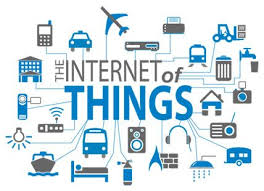IOT stands for the Internet of Things. Simply put, the Internet of Things represents any device that is capable of connecting to the internet. Take a look around your home. You would be surprised at how many devices you already own that are capable of connecting to your home network – and I’m not talking about your computers, tablets and cell phones. A recent study by Intel found that the average home has about 10 connected devices. This figure is expected to balloon to 50 by 2020. Smart TVs, multi-function printers, game consoles, smart thermostats, baby monitors, wearables like smart watches and fitness trackers and even home appliances are just a few examples.
So what’s the problem?
Firstly, just imagine what type of personal information these devices are accumulating about you and your family. The Smart TVs and media players are certainly tracking your viewing choices and your surfing habits. If you happen to video chat or check your email or Facebook through your TV then now your TV knows your email address and your Facebook credentials. What if your Smart TV has a web camera and microphone? Now there is the potential for someone to gain unauthorized access to your TV and use the camera and microphone to spy on you and your family. What about wireless security cameras and smart baby monitors? Let’s face it, any device that has a smartphone app is most certainly another device to be concerned about.
Enough with the scare tactics … so what can you do to protect yourself?
Well you could gather all of your IOT devices up and smash them to bits with a big hammer – as long as you are wearing the proper eye protection and other appropriate safety equipment.
Relax, there are more practical options. First and foremost you need to properly secure your home Wifi network. Hopefully you have already done that but just in case you are not sure what that entails here are the minimum steps you need to take in order to secure your home Wifi network:
(1) Assign your Wifi network a complex password using WPA2 security (mix of case, numbers, min 12 chars)
(2) Change the default name of your home network(SSID) to disguise the make and location of your network
(3) Change your router’s default administrator password (most routers ship with a simple default password)
(4) Disable remote access to your router preventing anyone from outside your home from gaining access
Here are some basic steps you should take to secure those IOT devices:
(1) Always change the default password for the device – ALWAYS!
(2) Don’t connect the device to your Wifi network unless you really need to (think about if your fancy new smart refrigerator really needs internet access)
(3) Cover any unused camera lenses with some painters tape
(4) Keep the firmware updated for all of your connected devices
(5) Review all of your connected devices regularly and unplug any unused ones
If you want more information about network security, IOT or any other technical topic, please feel free to contact me, Wayne Matthews at: wmatthews@trenthillstechnical.ca

